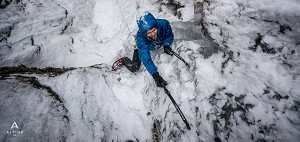
Black Diamond Turbo Express Ice Screw (2008 model)
Now-a-days we are bombarded with top of the line gear from different manufacturers, each claiming that theirs is the new 'must have' item. When it comes to ice screws it can be hard to pick one over the others, as you don't often find yourself in a position where you can try out every different type. This is due in part to that fact that UK climbers don't tend to own many ice screws if any at all. However with more and more Brits heading abroad for those long, steep and hopefully fat multi-pitch ice routes, screws are starting to take their rightful position in any mountaineers rack.
My first ice screw was a hammer-in, screw-out variety and, coupled with a few warthogs, formed the start of my winter rack. However as I started to climb abroad it became obvious that whilst those pioneers of old were happy climbing WI4 with 'basic' instruments, I was not! How fast my rack was upgraded depended on how much spare cash I had at the time. After all that's the problem with ice screws - they aren't cheap. When you pay the same amount for a WC technical friend as a hollow steel tube you may start to feel that you are being ripped off somehow. However the precision engineering and rigorous testing they go through, whilst maybe not fully apparent, explains why these ice lifesavers are worth their weight in gold (which is practically the case!)
Being more of a mixed and ice climber than a rock climber I've tried most types and make of ice screw. Living in the Alps you tend to use a lot of other gear from different partners and I have a pretty solid idea of what works, when my calves are going Elvis and my forearms are starting to feel like lead.
What's an 'Express' Ice Screw?
For those who've never used an 'express' ice screw before (one with a turning handle to speed up placements), you should - because they are amazing! The difference between placing them and normal screw-in ice screws when on steep terrain is phenomenal and any energy and time saved when placing ice gear is a bonus in my book. Whilst I think Black Diamond pioneered the idea with their first BD turbo express, many other major manufacturers have followed suit with their variation on the principle.
However they aren't cheap and the thought of paying upwards of £35 per screw made my gut turn and I found, entirely by chance, a much cheaper ice screw from the States - made by Omega Pacific. Lined up against the BD express, 360, Lasers, and Helix screws, I always reached for my Omega Pacific screws first. I felt they had a better bite and went in easier than any other screw I had used before, and did I mention they were cheap? Unfortunately you can't buy them in the UK, so they aren't so easy to get hold of. However along came the new BD Turbo Express. Full of promise that it had better bite, larger retractable handle and two clip in points on the hanger; I was of course naturally sceptical. A lot of marketing hype? Well actually, no. In my honest opinion these far surpass the old BD express screws and now take first place in my ice screw rack.
Apart from the odd goulotte and easier ice fall they got the proper test when it came to climbing Desperados - a WI5 on the rive droit of the Argentiere Glacier. This 140m ice ribbon was the perfect test as early in the season it threw all kinds of ice at us, from hard compact to delicate chandelier ice and messy mixed choss. The new Turbo Express bit the ice like a dream and the whole, often terrifying, experience was over in a breeze. The bite, to me, is one of the key selling points as I want to spend as little time as possible trying to jam the teeth into the ice, and as much time as possible being clipped into the gear feeling like I might not die if I fall. I found that I could start winding away after only one and a half 'forced' turns in any ice. I was really impressed. The larger retractable handle is certainly a lot easier to deal with when wearing mountaineering gloves and makes it a lot less fiddly - not a major upgrade but then what more can you really do? As for the double clip in point on the hanger, I didn't really see the point in it at first. However on the ice it was a different story. A great little idea to clip your tools to; or even attach a sling to it and as you are belaying your partner up, start clipping all your remaining gear to so you can keep moving as fast as possible (obviously making sure your belay device is an auto-lock one).
As for the hanger itself, it's now just plain stainless steel - not black like the previous version. Black, being a great absorber of the sun's rays, was always an odd choice for the previous model ice screw hanger. Maybe it doesn't make a difference but I like my ice screws to stay as cold as possible. Of course no upgrade would be complete without the necessary shaving off a few grams of weight. The new BD Turbo Express knocks off 10 grams on the 16cm version over its old model. Not enough to make it a selling point for me but nevertheless a welcome improvement thrown into the deal. This does not of course affect its strength and as usual all screws are CE certified (apart from the 10cm screw which is the norm across all manufacturers). All screws have colour coded handles as standard and come in lengths of 10cm, 13cm, 16cm, 19cm, 22cm
Conclusion:
I suppose the final question is who are they aimed at? Well anyone who wants to push themselves on steep ice really. I wouldn't recommend them for Scottish I or II as I think you can save a lot of money and use a normal ice screw on that kind of terrain (not an 'express' one); after all this is the major downside of these screws, the price. Express type ice screws vary between £35-£45 with the Helix being on the cheaper end, the Turbo Express in-between and the 360 at the expensive end. So all in all a good bargain for an express ice screw I would say. At the end of the day I don't think you should be too fussy about saving £5 here or there, just go and get what works best for you - after all there are times when I'm promising whatever deity might be up there a small fortune as long as this bloody ice screw just goes in (I've yet to fulfil any of those promises mind you).
Would I buy this ice screw again? Definitely.
Visit the Black Diamond Website for more information.
Jon Griffith - age: 24 - Chamonix
My first climbing days were back in Bristol where the Avon gorge provided countless trad limestone routes that were great fun to get into climbing. Having no climber friends I ended up 'teaching' myself how to lead climb and thankfully I managed to get through the first few months without falling which was great since most of my gear kept falling out anyway. That summer I bivied across the high route of the Pyrenees and come that winter I decided that I wanted to head out to the Alps and see what that was like. No surprises then that I ended up in Chamonix and was initiated into ice climbing down at the Crémerie.
From then on I took advantage of the huge university holidays and tried to spend a maximum amount of time out in the Alps. I spent my first few years out in Zermatt (thanks to my climbing partner at the time Brian Birtle who put me up countless times) getting more into the mixed and alpine element rather than just rock climbing Chamonix style stuff. I finished my 'time' out in Zermatt on a high point with the Lyskamm North Face and decided I was ready to move on and try Chamonix style rock routes. I finished university last summer and moved out to Chamonix where I am currently working in photography and film work.
It's hard to pick one specific type of climbing that I prefer over the others but I think my heart still lies with big mixed alpine routes that potentially involve a couple of nights bivying. I am still getting used to the whole Chamonix 'get back in time for the last lift' style- I still include bivying as a part of any decent mountaineering experience. I am also still getting used to crack climbing- it hurts.... a lot.
Read more about Jon on his photography website Alpine Exposures.



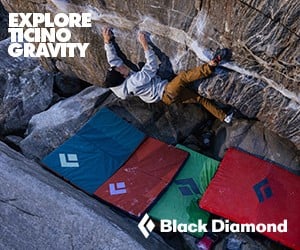

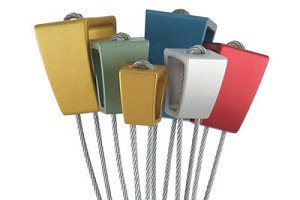
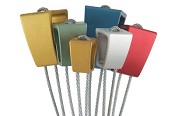
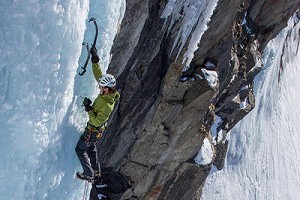
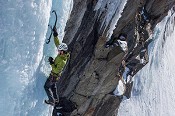
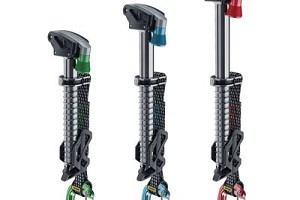
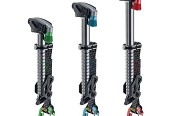
Comments